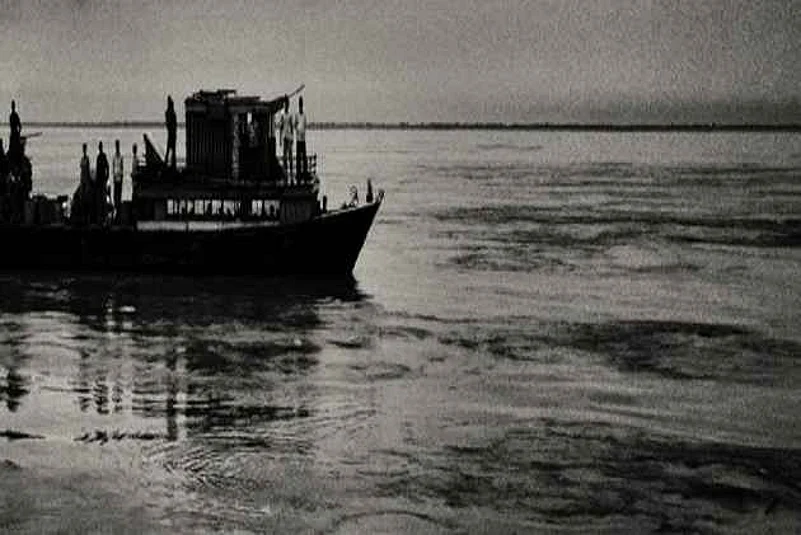(Ashok Swain is professor of peace and conflict research at Uppsala University, Sweden)
China’s Water Diversion Is Not Responsible For Brahmaputra River Turning Black
A sub-regional strategy with Bangladesh, Bhutan and Nepal will only help India be able to bargain with China from a position of strength on water sharing issues.

China’s Water Diversion Is Not Responsible For Brahmaputra River Turning Black
China’s Water Diversion Is Not Responsible For Brahmaputra River Turning Black
For almost two weeks, Indian media has been reporting about Brahmaputra River water being extremely muddy and dark colored, which is unusual at this time of the year. Without properly investing the reasons behind it, the politicians, commentators and journalists are blaming China. They overlook the deforestation and road construction activities in Indian side and allege that China has started building a tunnel to divert the river water in the upstream, which has muddied their ‘sacred’ Brahmaputra. No one cares to think that why China will start the construction of a 600 kilometer long tunnel from the side of the river. For some years, it has become a fashion for few commentators and a section of media to highly securitize India’s transboundary water sharing issues. Most of these commentaries lack rudimentary understanding of water management but very skillful in arousing nationalist passion in the country.
In India, the media has been highlighting China’s so-called plan to divert water from the Brahmaputra river in recent years. But, very few have tried to understand and explain what is that diversion plan and where that stands now.
It is true that China is diverting water from its water rich southern region to water starved and highly populated northern part of the country. In 2001, China initiated this mega-project and this South-North Water Diversion Project once fully completed aims to divert 44.8 billion cubic meters of water annually from the Yangtze River to the north. The construction of three diversion routes, stretching south to north across the eastern, central, and western parts will connect China’s four domestic rivers – Yangtze, Yellow River, Huaihe, and Haihe. The construction of the central part of the project has been partly completed and the water diversion to Beijing has been operational since 2014. High cost, population displacement and environmental issues have delayed this project than it was originally planned.
China’s increasing thirst for water is of course not only limited to diverting its own internal rivers. There is a long-standing plan in Beijing to divert 200 billion cubic meters of water from the upstream part of three major international rivers in southwestern China - Lancang-Mekong, Nu-Salween, and Yarlung Tsangpo Brahmaputra - to northern parts of China. However, high economic cost and technological challenges have forced China to suspend this water diversion plan for the time being. On the other hand, China has started to pursue building a number of hydropower dams on these international rivers. Not water transfer, but hydropower production has become central to the present strategy. China has already built 6 hydropower dams on the Lancang, the upstream of the Mekong River creating uncertainties over water supplies to the downstream countries in Southeast Asia.
However, the similar dam building success China has not managed to get on Nu-Salween or YarlungTsangpo-Brahmaputra Rivers. Way back in 2003, China disclosed its plan to build 13 dams cascade on Nu-Salween River. But, the Chinese government was forced to halt the construction twice due their potential high ecological and social costs. In 2013, it decided to reduce the number of planned dams from 13 to 5 only. Still not much progress has been done on these dam sites as these hydropower projects are now on hold, due to lesser energy demand in China and the late realization of authorities of high cost factor to construct electricity grid in a rugged topography. The Chinese government’s latest Five Year National Energy Plan does not even include the proposed dam projects on the Nu-Salween River.
China also faces similar challenges to build its planned hydropower dams on YarlungTsangpo-Brahmaputra river, though it has achieved some successes. Approximately 50% of Brahmaputra’s total catchment area is within China. The river originates from the glacier mass of Chema-Yung-Dung in the southern Tibet. The area is remote from large cities of China and the river was left undammed till recently. The first hydropower dam, China has managed to build on the river till now, is called Zangmu dam, with a capacity of 510 MW.
The dam, which was completed in 2015, is located 140 km southeast from Lhasa and approximately 500 km from the border of India. There are three more hydropower dams are planned by China in the upstream of the river: Da gu, Jie Xu and Jia Chan dams and most likely the construction of Da Gu and Jia Chan dams have started after much delay. These hydropower dams, even if gets completed and operational, they will not reduce the water supply in the river to downstream India. These dams are only for hydro-power generation not multi-purpose in nature, and also, these dam sites are far from the possible water diversion tunnel China might built in future to divert the water to its southern part.
If China ever plans to dig a tunnel to divert the water, that will be from the ‘Great Bend’ from where Brahmaputra River takes a sharp turn to enter India, 30 kilometres north of Indian border. China has a plan to build Mo Tuo dam there, which has the potential of being the world’s biggest hydropower dam with a capacity of 38 gigawatt hydropower production. But, the high cost, huge technological challenge and low energy demand in China have kept this mega dam construction out of country’s 12th Five Year National Energy Plan as well. If China ever become serious to transfer the water from Brahmaputra through building tunnels, the construction of the Mo Tu dam has to be undertaken first. So, the present apprehension in India about China’s possible water diversion is nothing but premature.
China is not going to transfer the Brahmaputra water to its southern part of the country soon. The plan also involves Mekong and Salween Rivers and will affect a large number of countries. Moreover, the tunnel building in a very challenging terrain will not that easy. Even if China does not divert the water, but its hydropower dams also creates new uncertainties for India’s historical domination in the basin. But, screaming and shouting as it has been Indian strategy for some time now will not stop China. China has not committed to any formal agreements with its neighbors regarding any of its shared rivers. Its advantageous geo-strategic position and economic muscle in the international basins allows China to unilaterally build dam projects on the shared rivers. China has no economic or political incentive to come into an agreement to manage the transboundary river with India. Moreover, India’s bilateral relations has also deteriorated considerably with China in recent years. To meet China’s challenge in the upstream, India needs to use smart diplomacy and create a cooperative framework with other countries in the basin as lower Mekong basin countries have done. A sub-regional strategy with Bangladesh, Bhutan and Nepal will only help India be able to bargain with China from a position of strength on water sharing issues.
(Ashok Swain is professor of peace and conflict research at Uppsala University, Sweden)
Published At:
MOST POPULAR
WATCH
MORE FROM THE AUTHOR
PHOTOS
×
























